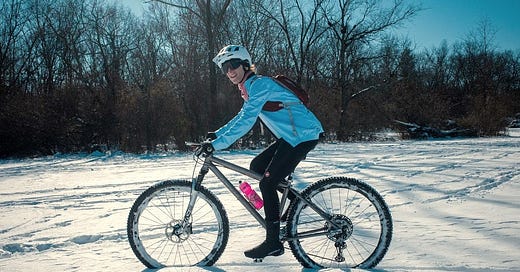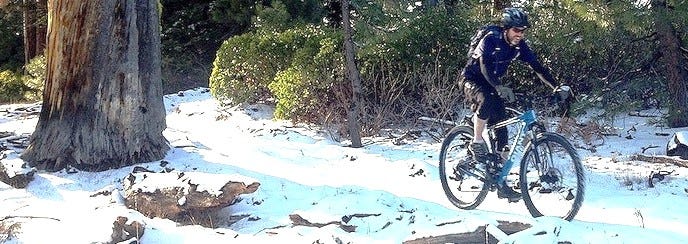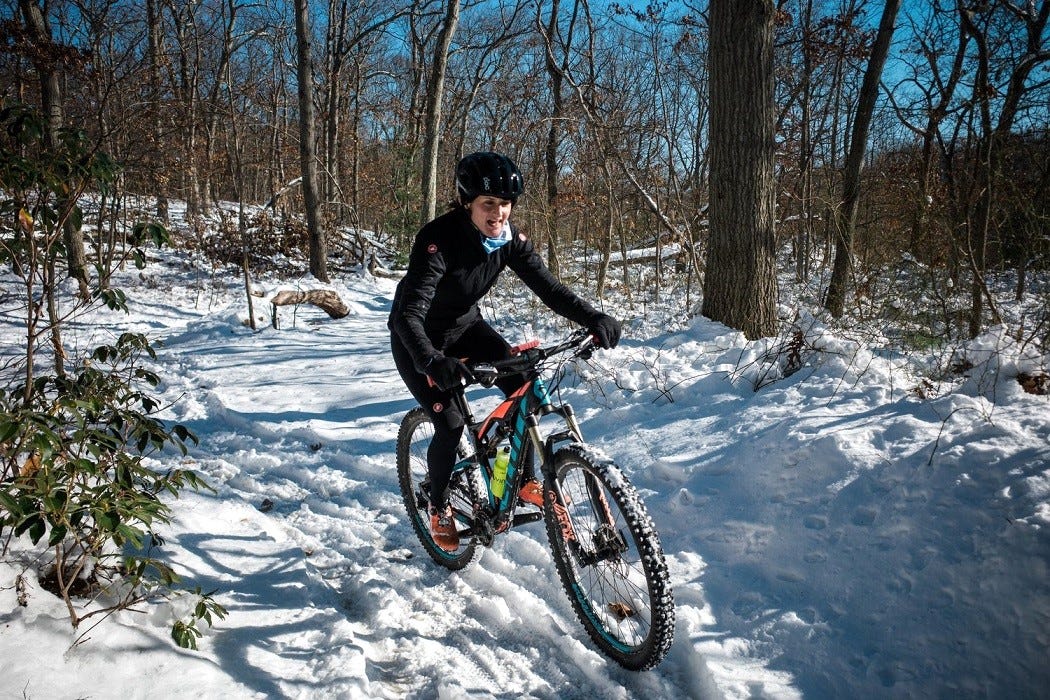Riding on snow or icy surfaces requires a bit of a change in your normal riding style and thinking. Remaining neutral and minimizing forward weight shift is key when riding on snow or ice. A few tips-recommendations to get started;
Install flat pedals (if you're not already using them)
Lower tire pressures (* +/- 30% 35% less than normal for rider weight & tire width)
Adapt your mind-set for the slower, more challenging conditions.
Ideally you want to keep your weight centered between the rear wheel and the bottom bracket, with a slightly more upright posture, and maintain a light grip on the handlebars to better manage the reduced traction. Note that when riding on snow or icy surfaces, you may wind up being in the saddle slightly more than usual. Although when it gets really icy-slippery, lifting your butt off the saddle a bit will aid with control. It can be tricky. It’s really about ‘Feel’ the more you ride, the more opportunity to develop feel.
‘Feel’ is your body sensing subtle movements and cues, the sensory perception of movement and balance provided by your inner ear. The vestibular system plays a key role in maintaining balance by sensing head position and movement, allowing the body to make the necessary adjustments to stay upright and balanced while navigating limited traction surfaces and changes in terrain.
One of the main factors for navigating traction compromised surfaces is thinking about how the force of body and bike is applied to the ground. You want more vertical pressure (up & down) so as you're applying less force forward- and this is due to lower coefficient of friction (traction) conditions. This technique is what the bike requires, an increase in vertical force/friction for a potential increase of stability.
Riding on snow or icy surfaces can be similar to riding on very loose dirt and-or slick mud, you have to expect that the bike is going to slip and slide beneath you a bit, but the best thing to do is stay relaxed and try not to tense up, allow the bike to move underneath you. Reduce your pressure on the bars to allow the front end to track the natural course the bike wants to plot.
Adapting your riding style for the reduced friction available is a key factor in navigating potential slippery surfaces. Maneuver the bike smoothly and gradually. Avoid any aggressive braking inputs and sudden body movements, this will ensure that your ride is an enjoyable one but challenging as well!
Reducing tire pressure by approximately 30% to 35% is a baseline recommendation. To find your ideal specific pressures will take some trial & error along with rider weight and terrain considerations.
*Recommended tire pressure reduction is referring to non-fat tired bicycles.
Typically, 4” to 5” wide fat tires will utilize 3 psi to 5 psi depending on rider weight and specific tire width.
#bike #mtb #off road






